owned this note
owned this note
Published
Linked with GitHub
---
tags: mdef, fabricademy, fabacademy
---
# Interfacing the real world
[TOC]
# **Sensors**
# Movement
## Accelerometer
> An accelerometer is a tool that measures proper acceleration. Proper acceleration is the acceleration (the rate of change of velocity) of a body in its own instantaneous rest frame; this is different from coordinate acceleration, which is acceleration in a fixed coordinate system. For example, an accelerometer at rest on the surface of the Earth will measure an acceleration due to Earth's gravity, straight upwards (by definition) of g ≈ 9.81 m/s2. By contrast, accelerometers in free fall (falling toward the center of the Earth at a rate of about 9.81 m/s2) will measure zero.
from [wikipedia](https://en.wikipedia.org/wiki/Accelerometer)

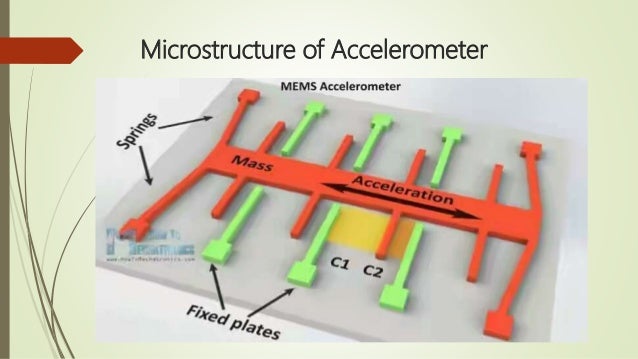
:::info
[Accelerometer Basics](https://learn.sparkfun.com/tutorials/accelerometer-basics) in learn.sparkfun
[How an accelerometer works!](https://www.youtube.com/watch?v=i2U49usFo10&t=3s) video on youtube.
:::
## Giroscope
> Gyroscopes, or gyros, are devices that measure or maintain rotational motion. MEMS (microelectromechanical system) gyros are small, inexpensive sensors that measure angular velocity. The units of angular velocity are measured in degrees per second (°/s) or revolutions per second (RPS). Angular velocity is simply a measurement of speed of rotation.
from [sparkfun](https://learn.sparkfun.com/tutorials/gyroscope/all)

## IMU (Inertial Movement Unit)
> An inertial measurement unit (IMU) is an electronic device that measures and reports a body's specific force, angular rate, and sometimes the orientation of the body, using a combination of accelerometers, gyroscopes, and sometimes magnetometers. When the magnetometer is included, IMUs are referred to as IMMUs
from [wikipedia](https://en.wikipedia.org/wiki/Inertial_measurement_unit)
:::info
[Tutorial on understanding IMU data](https://theccontinuum.wordpress.com/2012/09/24/arduino-imu-pitch-roll-from-accelerometer/)
:::
## Passive Infrared Sensor (PIR sensor)
> A passive infrared sensor (PIR sensor) is an electronic sensor that measures infrared (IR) light radiating from objects in its field of view. They are most often used in PIR-based motion detectors. PIR sensors are commonly used in security alarms and automatic lighting applications.
from [wikipedia](https://en.wikipedia.org/wiki/Passive_infrared_sensor)
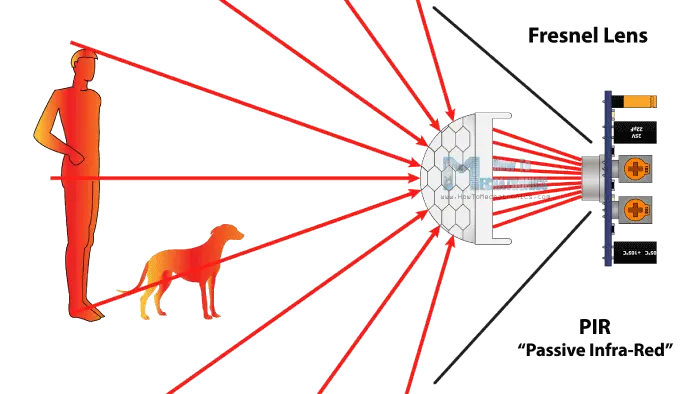
:::info
[PIR Motion Sensor](https://learn.adafruit.com/pir-passive-infrared-proximity-motion-sensor) in learn.adafruit
:::
## Optical encoder
> A rotary encoder, also called a shaft encoder, is an electro-mechanical device that converts the angular position or motion of a shaft or axle to analog or digital output signals.
> Optical: This uses a light shining onto a photodiode through slits in a metal or glass disc. Reflective versions also exist. This is one of the most common technologies. Optical encoders are very sensitive to dust.
from [wikipedia](https://en.wikipedia.org/wiki/Rotary_encoder#Basic_types)

## Optical motion sensor
https://www.tindie.com/products/onehorse/pmw3901-optical-flow-sensor/
https://www.tindie.com/products/citizenjoe/adns-9800-motion-sensor/
# Position
## Magnetometer (Compass)

## GPS
>The Global Positioning System (GPS), originally Navstar GPS, is a satellite-based radionavigation system owned by the United States government and operated by the United States Space Force. It is one of the global navigation satellite systems (GNSS) that provides geolocation and time information to a GPS receiver anywhere on or near the Earth where there is an unobstructed line of sight to four or more GPS satellites. It does not require the user to transmit any data, and operates independently of any telephonic or Internet reception, though these technologies can enhance the usefulness of the GPS positioning information.
>China's BeiDou Navigation Satellite System began global services in 2018, and finished its full deployment in 2020. There are also the European Union Galileo navigation satellite system, and India's NavIC. Japan's Quasi-Zenith Satellite System (QZSS) is a GPS satellite-based augmentation system to enhance GPS's accuracy in Asia-Oceania, with satellite navigation independent of GPS scheduled for 2023.
from [wikipedia](https://en.wikipedia.org/wiki/Global_Positioning_System)

:::info
[GPS Basics](https://learn.sparkfun.com/tutorials/gps-basics) in learn.sparkfun
[GPS - The GPS Constellation](https://www.youtube.com/watch?v=16xHIBmul_o&list=PLX2gX-ftPVXXGdn_8m2HCIJS7CfKMCwol) video (1 of 100!)
:::
## Tilt sensor

# Proximity
> A proximity sensor is a sensor able to detect the presence of nearby objects without any physical contact.
> A proximity sensor often emits an electromagnetic field or a beam of electromagnetic radiation (infrared, for instance), and looks for changes in the field or return signal. The object being sensed is often referred to as the proximity sensor's target. Different proximity sensor targets demand different sensors. For example, a capacitive proximity sensor or photoelectric sensor might be suitable for a plastic target; an inductive proximity sensor always requires a metal target.
from [wikipedia](https://en.wikipedia.org/wiki/Proximity_sensor)
## Ultrasound
> Ultrasonic transducers and ultrasonic sensors are devices that generate or sense ultrasound energy. They can be divided into three broad categories: transmitters, receivers and transceivers. Transmitters convert electrical signals into ultrasound, receivers convert ultrasound into electrical signals, and transceivers can both transmit and receive ultrasound.
from [wikipedia](https://en.wikipedia.org/wiki/Ultrasonic_transducer)

:::info
[Ultrasonic Sonar Distance Sensors](https://learn.adafruit.com/ultrasonic-sonar-distance-sensors) in learn.adafruit
[Getting Started with the HC-SR04 Ultrasonic sensor](https://projecthub.arduino.cc/Isaac100/getting-started-with-the-hc-sr04-ultrasonic-sensor-7cabe1) in Arduino project hub.
:::
## LIDAR
> Lidar is a method for determining ranges (variable distance) by targeting an object or a surface with a laser and measuring the time for the reflected light to return to the receiver. It can also be used to make digital 3-D representations of areas on the Earth's surface and ocean bottom of the intertidal and near coastal zone by varying the wavelength of light. It has terrestrial, airborne, and mobile applications.
from [wikipedia](https://en.wikipedia.org/wiki/Lidar)

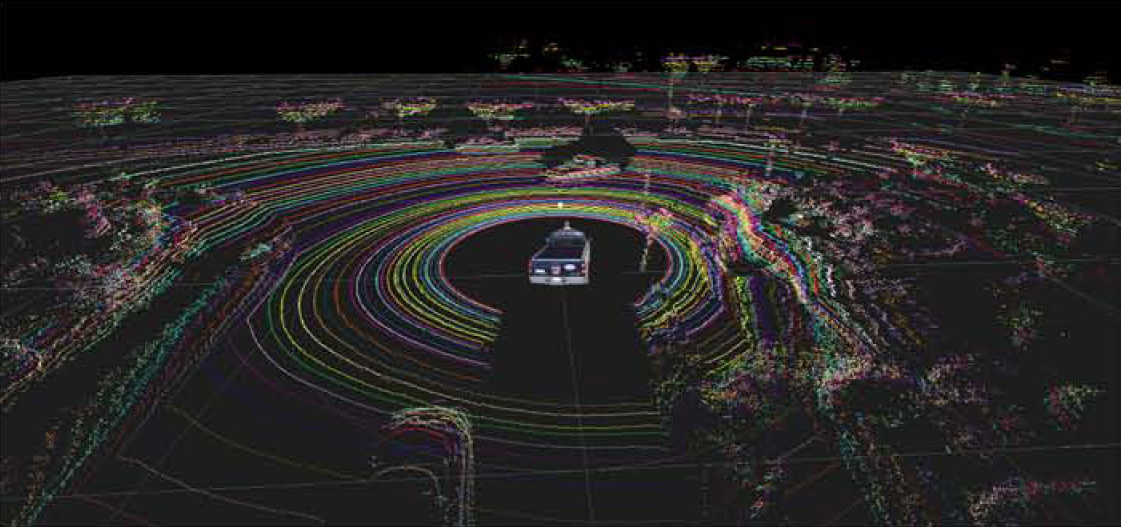
> A LIDAR is a sensor that can detect distance precisely, using a laser. Unlike Time-of-Flight sensors, LIDARs are incredibly fast. Unlike sonar/ultrasonic sensors, they're very precise, measuring the point exactly ahead.
> Now, because you can get accurate distance measurements at high speeds, you can put the LIDAR sensor on a spinning motor. The laser shoots out thousands of times a second, and when correlated with the angular location, can create a 2D 'map' of obstacles and walls. Normally, LIDAR sensors are outside the budget of hobby/maker robots, but the Slamtec is a great price and is an excellent choice for many robots or interactive projects.
from [adafruit](https://learn.adafruit.com/slamtec-rplidar-on-pi)

## Infrarred
>IR, in short for infrared, detects the presence of an object by emitting a beam of infrared light. It works similarly to ultrasonic sensors, though instead of using sonic waves, IR is transmitted.
>Infrared proximity sensors consist of an IR LED that emits, and a light detector for detection of reflection.
from [seeed](https://www.seeedstudio.com/blog/2019/12/19/all-about-proximity-sensors-which-type-to-use/)

# Capacitive
> In electrical engineering, **capacitive sensing** (sometimes capacitance sensing) is a technology, based on capacitive coupling, that can detect and measure anything that is conductive or has a dielectric different from air.
> Many types of sensors use capacitive sensing, including sensors to detect and measure proximity, pressure, position and displacement, force, humidity, fluid level, and acceleration. Human interface devices based on capacitive sensing, such as touchpads, can replace the computer mouse. Digital audio players, mobile phones, and tablet computers will sometimes use capacitive sensing touchscreens as input devices. Capacitive sensors can also replace mechanical buttons.
from [wikipedia](https://en.wikipedia.org/wiki/Capacitive_sensing)

:::info
Capacitive Sensor Arduino [Library](https://playground.arduino.cc/Main/CapacitiveSensor/)
Interesting application: [Stretch-Sensing Soft Glove](https://igl.ethz.ch/projects/stretch-glove/)
[Capacitive Sensing for Dummies](https://www.instructables.com/Capacitive-Sensing-for-Dummies/)
:::
## Touch screens [img](http://admetro.com/wp-content/uploads/2016/04/HowItWorks-PCAP-1400x600.jpg) 
## Touche [*](https://www.disneyresearch.com/project/touche-touch-and-gesture-sensing-for-the-real-world/) [*](http://www.instructables.com/id/Touche-for-Arduino-Advanced-touch-sensing/)
# Force and flex
* de Carga [info](http://www.sensores-de-medida.es/sensing_sl/SENSORES-Y-TRANSDUCTORES_35/Sensores-de-fuerza---C%C3%A9lulas-de-carga_69/) [img](https://cdn.sparkfun.com//assets/parts/4/5/9/5/10245-01a.jpg) 
## FSR Force sensitive resistor [img](https://cdn.sparkfun.com//assets/parts/2/9/6/7/09375-1.jpg) 
* Sísmicos [Geophone](https://www.sparkfun.com/videos#all/cpio4ItemwU/66) [video](https://www.ctbto.org/verification-regime/monitoring-technologies-how-they-work/seismic-monitoring/)
# Enviroment
## Humidity

## Soil moisture

:::info
[chirp!](https://wemakethings.net/chirp/) - the plant watering alarm
[b-parasite](https://github.com/rbaron/b-parasite) open source plant sensor
Interesting post: [Capacitance measurement using low pass filter](https://wemakethings.net/2012/09/26/capacitance_measurement/)
:::
## Gases, electrochemical and metal-oxide [img](http://www.gfg.biz/englisch/support/bilder/mess-EC-Kopie.gif) [*](https://en.wikipedia.org/wiki/Electrochemical_gas_sensor)  
## Barometric pressure sensor [img](https://cdn.sparkfun.com//assets/parts/8/1/7/9/11823-01.jpg) 
## Sound (microphone) [video](https://learn.adafruit.com/babel-fish) [img](https://ae01.alicdn.com/kf/HTB1Cz0BQFXXXXXiXpXXq6xXFXXXZ/OOTDTY-New-Electret-Microphone-Amplifier-MAX4466-With-Adjustable-Gain-For-Arduino.jpg) 
## Temperature [video](https://www.youtube.com/watch?v=q4vhbGzwzhQ) [info](http://www.electrontools.com/Home/WP/2016/03/30/funcionamiento-de-un-sensor-de-temperatura/) [info mas sencilla](http://medirtemperatura.com/sensor-temperatura.php) [img](https://cdn.sparkfun.com//assets/parts/4/1/8/8/10988-01.jpg) 
### Digital termometer [video](https://www.youtube.com/watch?v=Rppuxjc_Rzc) [video2](https://www.youtube.com/watch?v=OogldLc9uYc) [video3](https://www.youtube.com/watch?v=oZ-oFY6TiPw) [img](https://cdn.sos.sk/productdata/44/d6/66edb0c8/sht-31-dis-b-1.jpg) 
### Termopar [img](https://i2.wp.com/www.electroindel.com/templates/aplicacion/repositorio/Fotos_producto/son-termopar_especial.JPG) 
### Infrared sensor [img](http://des.everbuying.net/uploads/2015/201505/heditor/201505181557565597.jpg) 
### Thermistor [img](https://4.imimg.com/data4/JM/JI/MY-3596629/thermistors-250x250.jpg) 
# Image
## Camera [info](http://quecamarareflex.com/como-funciona-el-sensor-de-una-camara-digital/) [img](https://techterms.com/img/lg/cmos_222.jpg)   
## Light [video](https://learn.adafruit.com/light-meter) [video2](https://www.youtube.com/watch?v=UsLcHSbxf_8) [img](https://cdn-learn.adafruit.com/assets/assets/000/035/644/medium800/light_photocell-diagram.png?1473477670) 
## Color [video](https://learn.adafruit.com/adafruit-color-sensors) [video2](https://learn.adafruit.com/pixy-pet-robot-color-vision-follower-using-pixycam) [img](https://media.digikey.com/Photos/AMS-Taos%20USA%20Photos/TCS3104FN.JPG) 
## UV light [video](https://learn.adafruit.com/sunscreen-reminder-hat) 
## Infrared [video](https://www.youtube.com/watch?v=5_I5eIQsHq8) 
## Led as a sensor 
## Image processing and Computer vision as sensor
> **Computer vision** tasks include methods for acquiring, processing, analyzing and understanding digital images, and extraction of high-dimensional data from the real world **in order to produce numerical or symbolic information**, e.g. in the forms of decisions.
from [wikipedia](https://en.wikipedia.org/wiki/Computer_vision)

> Digital image processing is the use of a digital computer to process digital images through an algorithm... In particular, digital image processing is a concrete application of, and a practical technology based on: Classification, Feature extraction, Multi-scale signal analysis, Pattern recognition and Projection.
from [wikipedia](https://en.wikipedia.org/wiki/Digital_image_processing)
:::info
_Open Source Computer Vision Library_ [**opencv.org**](https://opencv.org/)
_The basics of image processing and OpenCV_ [**Article on ibm.com**](https://developer.ibm.com/articles/learn-the-basics-of-computer-vision-and-object-detection/)
_The Cloak Of Invisibility Against Image Recognition_ on [**hackaday**](https://hackaday.com/2019/05/03/the-cloak-of-invisibility-against-image-recognition/)
Arduino & Raspberry Pi _Ping Pong Ball Robot with Realtime Image Processing_ [**Video**](https://www.youtube.com/watch?v=YbO6lZHlJvw)
:::
### Eulerian Video Magnification for Revealing Subtle Changes in the World
> Our goal is to reveal temporal variations in videos that are difficult or impossible to see with the naked eye and display them in an indicative manner. Our method, which we call Eulerian Video Magnification, takes a standard video sequence as input, and applies spatial decomposition, followed by temporal filtering to the frames. The resulting signal is then amplified to reveal hidden information. Using our method, we are able to visualize the flow of blood as it fills the face and also to amplify and reveal small motions. Our technique can run in real time to show phenomena occurring at temporal frequencies selected by the user.
from [mit](https://people.csail.mit.edu/mrub/evm/)
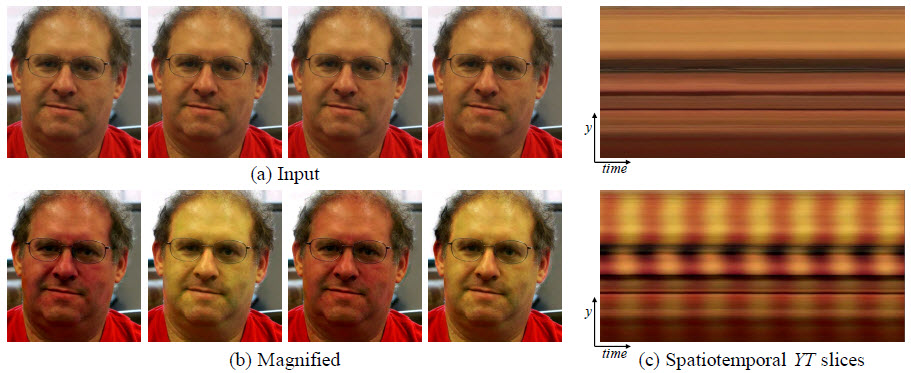
:::info
[**Video**](https://youtu.be/e9ASH8IBJ2U) explaining the process.
Original [**paper**](https://people.csail.mit.edu/mrub/papers/vidmag.pdf)
:::
# Biometric
[info](http://www.bioelectronix.com/what_is_biometrics.html)
## Musle sensor [img](https://i.ytimg.com/vi/2ThejVKBGcU/hqdefault.jpg)

## Heart rate [img](https://cdn.shopify.com/s/files/1/0100/6632/products/PulseSensorAmpedFinger-web_2_grande.jpg?v=1348514131)

## Finger print [img](https://cdn57.androidauthority.net/wp-content/uploads/2016/02/Optical-fingerprint-scanner-840x610.jpg)


## EEG Electroencephalogram (Alpha and beta waves) [img](https://img.purch.com/o/aHR0cHM6Ly93d3cubGFwdG9wbWFnLmNvbS9pbWFnZXMvdXBsb2Fkcy8zMzM3L2cvbWluZHdhdmVfbW9iaWxlX2cwNC5qcGc=)

## Thin-Film Biosensors
> Human skin is flexible, so matching the flexibility of skin allows these thin-film sensors to adhere more comfortably and naturally to a person’s body.
> An instrumentation amplifier to measure **heart rate** (and oftentimes **respiratory rate**) from the electrocardiogram, a light-emitting diode, and photosensor pair to measure heart rate, respiration, and **blood oxygen** from the photoplethysmograph, a thermistor or non-contact infrared sensor to measure **temperature**, and an accelerometer to measure **activity**.
from [HAD](https://hackaday.com/2022/12/27/flexible-thin-film-biosensors/)

:::info
Skin-Interfaced Biosensors and Pilot Studies for Advanced Wireless Physiological Monitoring in Neonatal and Pediatric Intensive Care Units [**Research Article**](https://www.ncbi.nlm.nih.gov/pmc/articles/PMC7315772/)
:::
# Magnetic
## Hall sensor [img](http://www.ti.com/content/dam/ticom/images/products/ic/sensing-products/diagrams/hall-effect-latches-and-switches-1280x720-dm879.png)

## Reed switch [img](https://c.76.my/Malaysia/y213-reed-switch-magnetic-field-open-detector-arduino-robotedu-1703-15-robotedu@6.jpg)
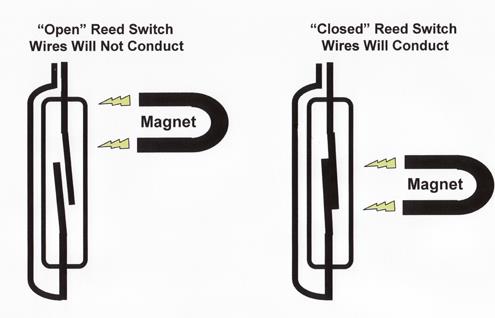
## Magnetometer (compass) [img](http://dlnmh9ip6v2uc.cloudfront.net/tutorialimages/HMC5883_Landing/5883L_BoB.jpg)

## Radiation (Geiger counter)  [img](https://www.cooking-hacks.com/media/cooking/images/documentation/geiger_counter_arduino_radiation_sensor_board/geiger_tubes.jpg)
# Other
## Textile potentiometer [video](https://learn.adafruit.com/textile-potentiometer-hoodie)
# **Actuators**
# Light
## LED - Light emitting diode
> A light-emitting diode (LED) is a semiconductor device that **emits light when current flows through it.** Electrons in the semiconductor recombine with electron holes, **releasing energy in the form of photons.** The color of the light (corresponding to the energy of the photons) is determined by the energy required for electrons to cross the band gap of the semiconductor.
from [wikipedia](https://en.wikipedia.org/wiki/Light-emitting_diode)

[](https://upload.wikimedia.org/wikipedia/commons/0/06/LED_Operation.ogv)
:::info
Make presents: [**the LED (video)**](https://www.youtube.com/watch?v=P3PDLsJQcGI)
Sparkfun LED [**guide**](https://learn.sparkfun.com/tutorials/light-emitting-diodes-leds/all)
:::
### RGB leds
> RGB (Red-Green-Blue) LEDs are actually three LEDs in one! But that doesn't mean it can only make three colors. Because red, green, and blue are the additive primary colors, you can control the intensity of each to create every color of the rainbow. Most RGB LEDs have four pins: one for each color, and a common pin. On some, the common pin is the anode, and on others, it's the cathode.
from [sparkfun](https://learn.sparkfun.com/tutorials/light-emitting-diodes-leds/all#types-of-leds)
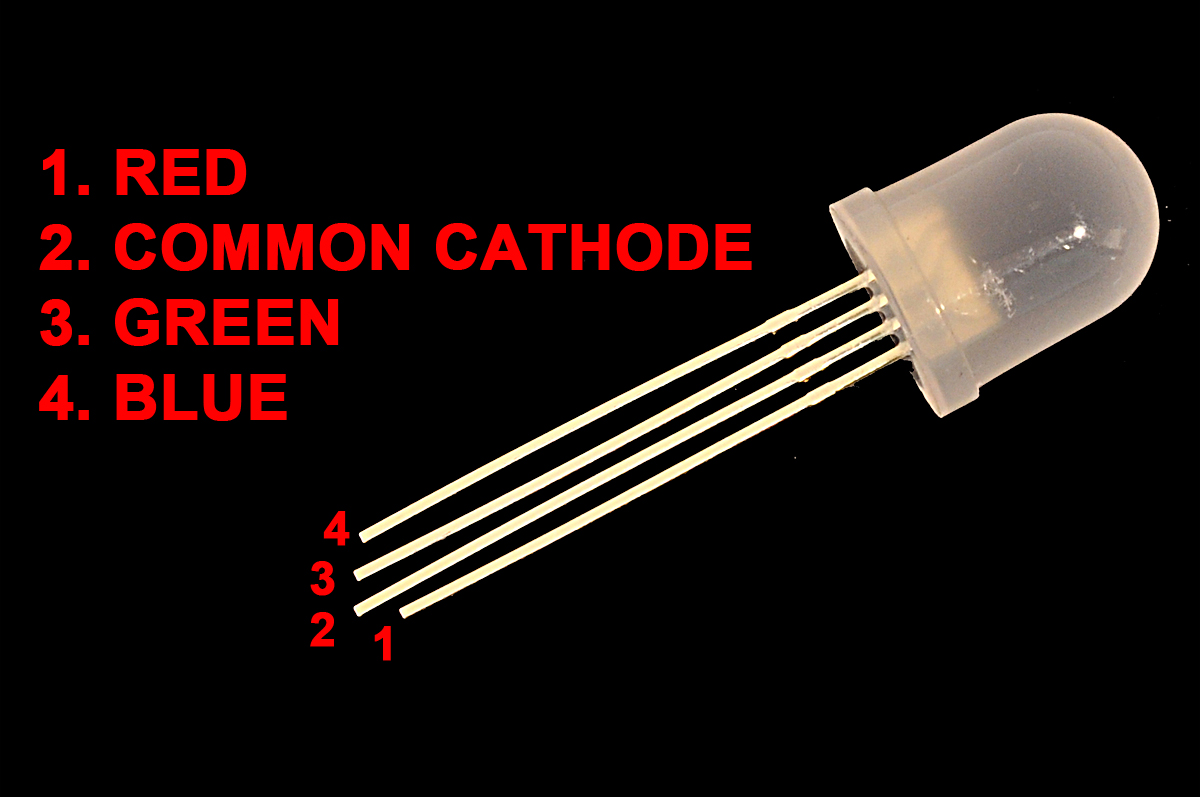
### Addressable Leds
> Digital RGB addressable LEDs contain their own "smart" control electronics. In addition to power and ground, these provide connections for data-in, data-out, clock and sometimes a strobe signal. These are connected in a daisy chain. Data sent to the first LED of the chain can control the brightness and color of each LED independently of the others.
from [wikipedia](https://en.wikipedia.org/wiki/Light-emitting_diode#Application-specific)

**Addressable led strip**
> An LED strip light (also known as an LED tape or ribbon light) is a flexible circuit board populated by surface mounted light-emitting diodes (SMD LEDs) and other components that usually comes with an adhesive backing.
from [wikipedia](https://en.wikipedia.org/wiki/LED_strip_light)

:::info
**References**
[Adafruit neopixel Uberguide](https://learn.adafruit.com/adafruit-neopixel-uberguide/the-magic-of-neopixels)
[Sparkfun addressable led guide](https://learn.sparkfun.com/tutorials/addressable-led-strip-hookup-guide/all)
Led strip application examples [**here**](https://www.youtube.com/watch?v=c7H5dYH_ghE), [**here**](https://www.youtube.com/watch?v=7FbK4wA7hjc) and [**here**](https://www.youtube.com/watch?v=39MujY-vDbc)
Adafruit [**Neopixel library**](https://github.com/adafruit/Adafruit_NeoPixel) for Arduino.
Arduino's Fastled [**library**](https://github.com/FastLED/FastLED).
:::
## Laser
> A laser is a device that emits light through a process of optical amplification based on the stimulated emission of electromagnetic radiation.
> A laser differs from other sources of light in that it emits light that is coherent. Spatial coherence **allows a laser to be focused to a tight spot**, enabling applications such as laser cutting and lithography. **It also allows a laser beam to stay narrow over great distances** (collimation), a feature used in applications such as laser pointers and lidar (light detection and ranging).
from [wikipedia](https://en.wikipedia.org/wiki/Laser)


:::info
Interesting video: [**Laser + mirror + sound**](https://www.youtube.com/watch?v=C-V1uXeyGmg)
[**Laser kinetic installation**](https://www.youtube.com/watch?v=JUe8yuWr4B8)
[Wireless Data Connections Through Light](https://hackaday.com/2023/08/25/wireless-data-connections-through-light/)
:::
## Electroluminescent [*](https://www.youtube.com/watch?v=RJ2xGFfrND0) [img](https://www.etrade724.com/4udiscount724/ad227/ec0159ebc122ed026x1.jpg)  [img2](https://d2rormqr1qwzpz.cloudfront.net/photos/2013/03/21/46240-el_digram.jpg) 
## LCD [video](https://www.youtube.com/watch?v=85LvW1QDLLw) [img](http://pages.vassar.edu/magnes/files/2012/04/simplestLCD.jpg) 
https://animagraffs.com/flat-screen-displays/
## OLED screens [img](https://s.hswstatic.com/gif/oled-cell.gif) 
# Sound
## Buzzers
## Speakers
> A loudspeaker (commonly referred to as a speaker or speaker driver) is an **electroacoustic transducer that converts an electrical audio signal into a corresponding sound**.
> A speaker system, also often simply referred to as a speaker or loudspeaker, comprises one or more such speaker drivers, an enclosure, and electrical connections possibly including a crossover network. The speaker driver can be viewed as a linear motor attached to a diaphragm which couples that motor's movement to motion of air, that is, sound.
from [wikipedia](https://en.wikipedia.org/wiki/Loudspeaker)
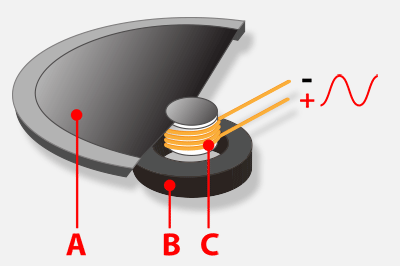
:::info
Excellent video on [**How Speakers Make Sound**](https://www.youtube.com/watch?v=RxdFP31QYAg)
Nice page about [**Speakers**](http://animagraffs.com/loudspeaker/)
Building DIY excellent quality and cheap flat speakers [**video**](https://www.youtube.com/watch?v=CKIye4RZ-5k)
[Know Audio: A Loudspeaker Primer](https://hackaday.com/2021/06/25/know-audio-a-loudspeaker-primer/) in Hackaday, or the full
:::
## Surface transducers [*](https://www.youtube.com/watch?v=voIP4agegL4)
# Movement
## Electric Motors
> An electric motor is an electrical **machine that converts electrical energy into mechanical energy**. Most electric motors operate through the interaction between the motor's magnetic field and electric current in a wire winding to generate force in the form of torque applied on the motor's shaft. An electric generator is mechanically identical to an electric motor, but operates in reverse, converting mechanical energy into electrical energy.
from [wikipedia](https://en.wikipedia.org/wiki/Electric_motor)

:::info
_Adafruit Motor Selection Guide_ on [**learn.adafruit**](https://learn.adafruit.com/adafruit-motor-selection-guide/powering-your-motors?view=all)
_Motors and Selecting the Right One_ on [**Sparkfun**](https://learn.sparkfun.com/tutorials/motors-and-selecting-the-right-one)
:::
### Vibration motor

### Stepper motor
> A stepper motor, also known as step motor or stepping motor, is a brushless DC electric motor that divides a full rotation into a number of equal steps. The motor's position can be commanded to move and hold at one of these steps without any position sensor for feedback (an open-loop controller), as long as the motor is correctly sized to the application in respect to torque and speed.
from [wikipedia](https://en.wikipedia.org/wiki/Stepper_motor)

> Driving a stepper motor is a bit more complicated than driving a regular brushed DC motor. Stepper motors **require a stepper controller** to energize the phases in a timely sequence to make the motor turn.
from [adafruit](https://learn.adafruit.com/all-about-stepper-motors/driving-a-stepper)
:::info
* [All About Stepper Motors](https://learn.adafruit.com/all-about-stepper-motors) in learn.adafruit
* [Stepper motor](https://www.reprap.org/wiki/Stepper_motor) in the Reprap wiki
* [Stepper motor driver](https://www.reprap.org/wiki/Stepper_motor_driver) in the Reprap wiki
* [How to control a stepper motor with DRV8825 driver and Arduino](https://www.makerguides.com/drv8825-stepper-motor-driver-arduino-tutorial/)
* Convert your stepper motor into an industrial servo with [Mechaduino](https://tropical-labs.com/mechaduino/)
:::
### DC motors

[video corto](https://www.youtube.com/watch?v=vN9aR2wKv0U)

### AC motors [otro](https://www.youtube.com/watch?v=g17f9J1-r-k) [img](https://micro.magnet.fsu.edu/electromag/electricity/generators/images/generatorphases.jpg) 
### Brushless motors [video](https://www.youtube.com/watch?v=bCEiOnuODac) [img](https://www.hpiracing.com/assets/images/walkthroughs/howbrushlessmotorswork/brushless_motor_diagram2.jpg) 
### Servo motor
> A servomotor is a rotary actuator or linear actuator that allows for precise control of angular or linear position, velocity, and acceleration in a mechanical system. It consists of a suitable motor coupled to a sensor for position feedback. It also requires a relatively sophisticated controller, often a dedicated module designed specifically for use with servomotors.
from [wikipedia](https://en.wikipedia.org/wiki/Servomotor)
 
:::info
_Servo Motors, how do they work?_ [**video**](https://www.youtube.com/watch?v=1WnGv-DPexc) (Hobby servos)
_How a Servo Motor works_ [**video**](https://www.youtube.com/watch?v=hg3TIFIxWCo) (Industrial servos)
_How To Make Robots Move Smoothly (with servos) | Arduino Tutorial_ [**video**](https://www.youtube.com/watch?v=jsXolwJskKM)
Tutorial on using servo motors with Arduino on [**adafruit.learn**](https://learn.adafruit.com/adafruit-arduino-lesson-14-servo-motors)
_Servos Explained_ on [**sparkfun**](https://www.sparkfun.com/servos)
_Hobby Servo Tutorial_ on [**sparkfun**](https://learn.sparkfun.com/tutorials/hobby-servo-tutorial)
:::
### Linear motor
## Magnetic actuators
### Solenoid and valves [*](http://www.electronics-tutorials.ws/io/io_6.html) [img](https://i.ytimg.com/vi/SwqM8zpmAD8/hqdefault.jpg) 
### Relays [*](http://www.electronics-tutorials.ws/io/io_5.html) [img1](http://www.pcbheaven.com/wikipages/images/howrelayswork_1268485820.jpg) [img2](https://img-aws.ehowcdn.com/640/cme/cme_public_images/www_ehow_com/i.ehow.com/images/a04/vm/ug/dpdt-relay-work_-800x800.jpg) 
## Pneumatic actuators
### Soft robots [*](https://www.youtube.com/watch?v=_X0rDW6NQ58) [*](https://www.youtube.com/watch?v=gI0tzsO8xwc) [img](https://www.3ders.org/images2014/build-an-air-powered-prosthetic-hand-on-a-regular-fdm-3d-printer-7.jpg) 
### Pneumatic arm [*](https://www.youtube.com/watch?v=SjJkt0zypkw) [img](https://tecnospiromt.com/IMAGES_10/28922/990_x_R500.2%20retallada.jpg) 
### Exo squeletons [*](http://www.roamrobotics.com/#usearea) [img](https://3.bp.blogspot.com/-MLBTWr8Ey0c/WIVLbAQDo8I/AAAAAAABR_g/tXWzhxD9WGwhnM_GGe6OULhvWQOENVR9ACLcB/s1600/roamrobotics.png) 
### Válves [img](https://i.ytimg.com/vi/mNXGRDsucxU/hqdefault.jpg) 
### Pistons [img](https://ep1.pinkbike.org/p4pb8122544/p4pb8122544.jpg) 
## Hidraulic actuators
### Pistons [img](https://anjungsainssmkss.files.wordpress.com/2011/08/hydraulics.jpg) 
[Brazo mecánico con jeringas](https://www.youtube.com/watch?v=JvyiHpEE4_U)
## Artificial muscles
> Artificial muscles, also known as muscle-like actuators, are materials or devices that mimic natural muscle and can change their stiffness, reversibly contract, expand, or rotate within one component due to an external stimulus (such as voltage, current, pressure or temperature).
from [wikipedia](https://en.wikipedia.org/wiki/Artificial_muscle)
:::info
_Artificial Muscles To Bring Relief To Robotic Tenseness_ in [**Hackaday**](https://hackaday.com/2016/06/06/artificial-muscles-to-bring-relief-to-robotic-tenseness/)
:::
### Pneumatic
> Pneumatic artificial muscles (PAMs) are contractile or extensional devices operated by pressurized air filling a pneumatic bladder. In an approximation of human muscles, PAMs are usually grouped in pairs: one agonist and one antagonist.
from [wikipedia](https://en.wikipedia.org/wiki/Pneumatic_artificial_muscles)

> They are known under many names, such as McKibben muscles – after their inventor J. L. McKibben, air muscles, or Pneumatic Artificial Muscles (PAM). In principle, they consist of an **inflateable rubber bladder** inside a chinese finger trap cylindrical, helically wound braid. **When air pressure is applied** to the bladder, it inflates inside the constraining braid, which **redirects the expansion force into a contractive force** through **changing it’s braiding angle.**
from [hackaday](https://hackaday.com/2016/06/06/artificial-muscles-to-bring-relief-to-robotic-tenseness/)

:::info
_X-crossing pneumatic artificial muscles_ on [**science.org**](https://www.science.org/doi/10.1126/sciadv.adi7133)
_Festo Air Arm_ [**video**](https://www.youtube.com/watch?v=2iG1ybuchx0)
DIY _McKibben Artificial Muscle_ [**video**](https://www.youtube.com/watch?v=oBkdKeTJ5NY)
:::
### Fishing line [*](https://www.youtube.com/watch?v=Tba8Nf02OSI) [img](https://francis.naukas.com/files/2014/02/Dibujo20140221-Artificial-Muscles-from-Fishing-Line-and-Sewing-Thread-science.jpg) 
### Nitinol
> Nickel titanium, also known as nitinol, is a metal alloy of nickel and titanium, where the two elements are present in roughly equal atomic percentages.
> Nitinol alloys exhibit two closely related and unique properties: the shape memory effect and superelasticity (also called pseudoelasticity). Shape memory is the ability of nitinol to undergo deformation at one temperature, stay in its deformed shape when the external force is removed, then recover its original, undeformed shape upon heating above its "transformation temperature". Superelasticity is the ability for the metal to undergo large deformations and immediately return to its undeformed shape upon removal of the external load. Nitinol can deform 10–30 times as much as ordinary metals and return to its original shape.
from [wikipedia](https://en.wikipedia.org/wiki/Nickel_titanium)
 
[Video](https://www.youtube.com/watch?v=DW4WaTmoZ3c) of tiny walker robot.
> This Inch Worm walking robot is actuated by nitinol wire. Nitinol is an alloy that can 'remember' a given shape or in this case length. The Inch Worm is powered by 2 AA batteries, and when the button is pressed and a current flows though the nitinol wire, it becomes hot and this causes it to shorten, as it goes to its 'remembered' length. As the nitinol shortens, it causes the two robot legs to move apart. Then, when the current stops, the nitinol wire cools, and - aided by the spring - goes back to its former (longer) length.
[](https://www.youtube.com/watch?v=DW4WaTmoZ3c)
:::info
_Nitinol: The Shape Memory Effect and Superelasticity_ [**Video**](https://www.youtube.com/watch?v=wI-qAxKJoSU)
_Tiny Robot Beetle Runs On Alcohol_ on [**Hackaday**](https://hackaday.com/blog/page/2/?s=nitinol)
:::
# Videos
## Sensing
* [Touché: capacitive profiles](https://www.youtube.com/watch?time_continue=8&v=E4tYpXVTjxA)
* [Synthetic Sensors: Towards General-Purpose Sensing](https://www.youtube.com/watch?v=aqbKrrru2co)
* [Light triangulation touch sensor](https://www.youtube.com/watch?v=2aOYc_GKTHQ)
* [Wifi human scanner](https://www.youtube.com/watch?time_continue=73&v=HgDdaMy8KNE)
* [3d printed capacitive sensors](https://www.youtube.com/watch?v=HwPS9_AzaLM)
* [Recognising gestures from wifi changes](https://www.youtube.com/watch?v=tJCQZxi_0AI)
* [Future Interfaces Group video list](https://www.youtube.com/channel/UC1TLWwu-sGVuN51AhTjeSZg)
* [Pencil capacitive sensors](https://www.youtube.com/watch?v=uPoKn4mbrQk)
* [3D printed wifi connected objects](https://www.youtube.com/watch?v=gU6-o9SIkMQ)
* [Audio surveillance via window panes](https://www.youtube.com/watch?v=MTpZsKCUvcc)
* [OpenCV and raspberryPi Ping Pong](https://www.youtube.com/watch?v=YbO6lZHlJvw)
* [Wall++: Room-Scale Interactive and Context-Aware Sensing](https://www.youtube.com/watch?v=175LB2OiMHs)
## Acting
* [Soft robots](https://www.youtube.com/watch?v=gI0tzsO8xwc)
* [Pneumatic robot](https://www.youtube.com/watch?v=SjJkt0zypkw)
* [Cable bot](https://www.youtube.com/watch?v=0LWx_Y9DKPc)
* [Fishing line muscles](https://www.youtube.com/watch?v=gI0tzsO8xwc)
* [Artificial muscles](https://www.youtube.com/watch?v=2iG1ybuchx0)
* [Vacuum robot gripper](https://www.youtube.com/watch?v=3OjhoVuAQkQ)
* [Scara robot](https://www.youtube.com/watch?v=R_AIzCTYBNs)
* [Jumping robot](https://www.youtube.com/watch?v=ZFGxnF9SqDE)
* [Laser tracking with opencv and raspberry](https://www.youtube.com/watch?v=oJAl9Yd3kNo)
 Sign in with Wallet
Sign in with Wallet

